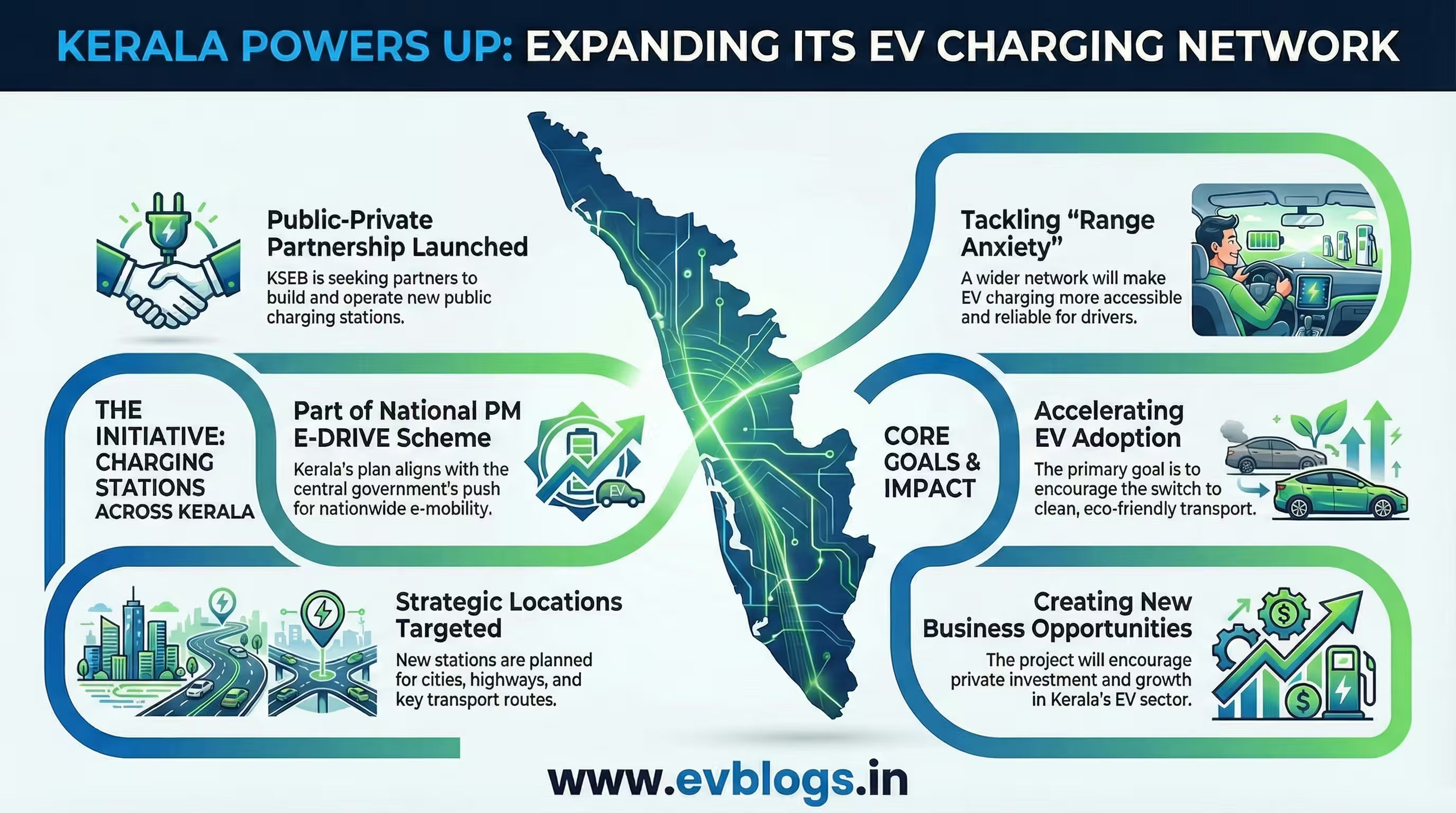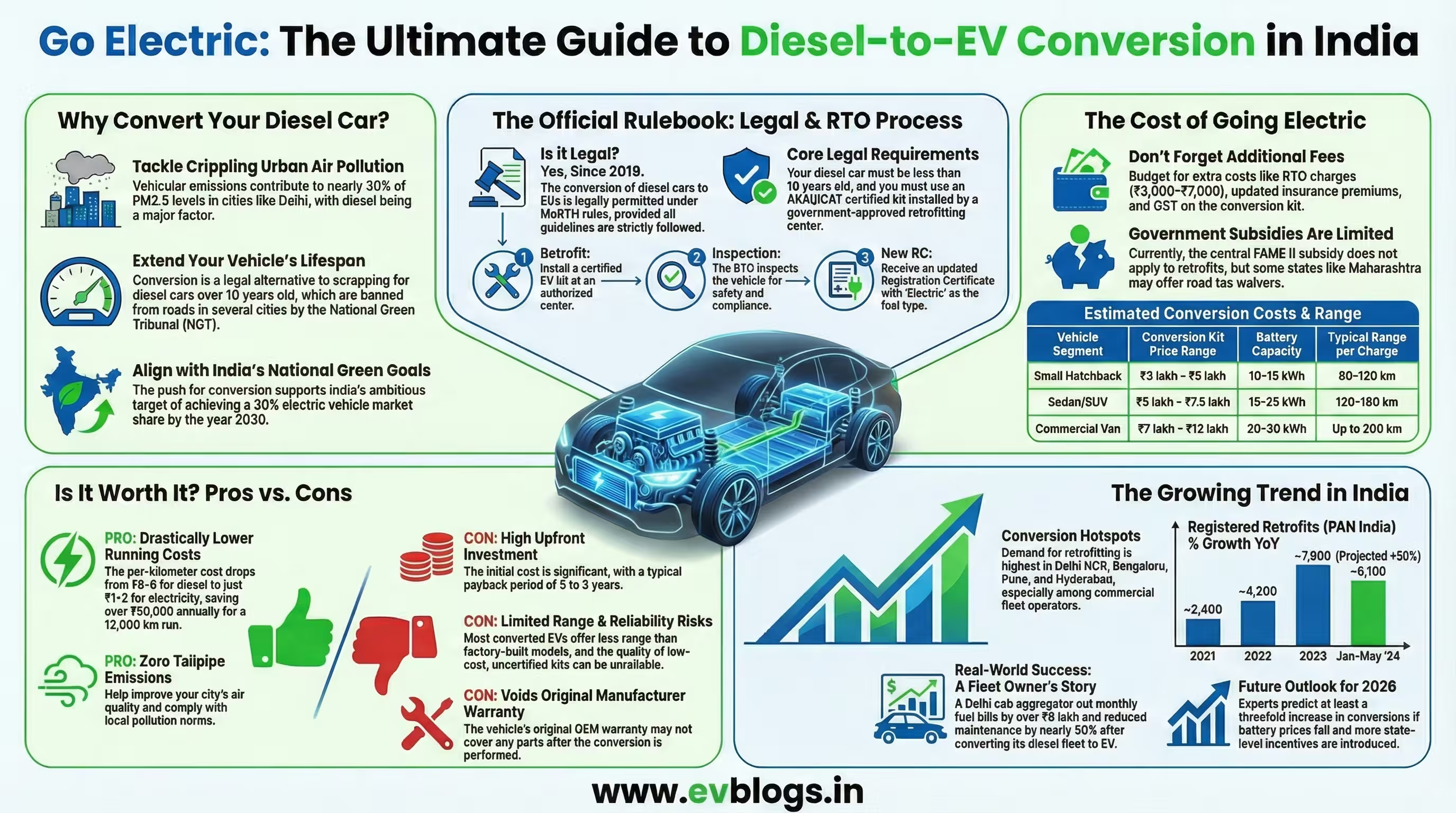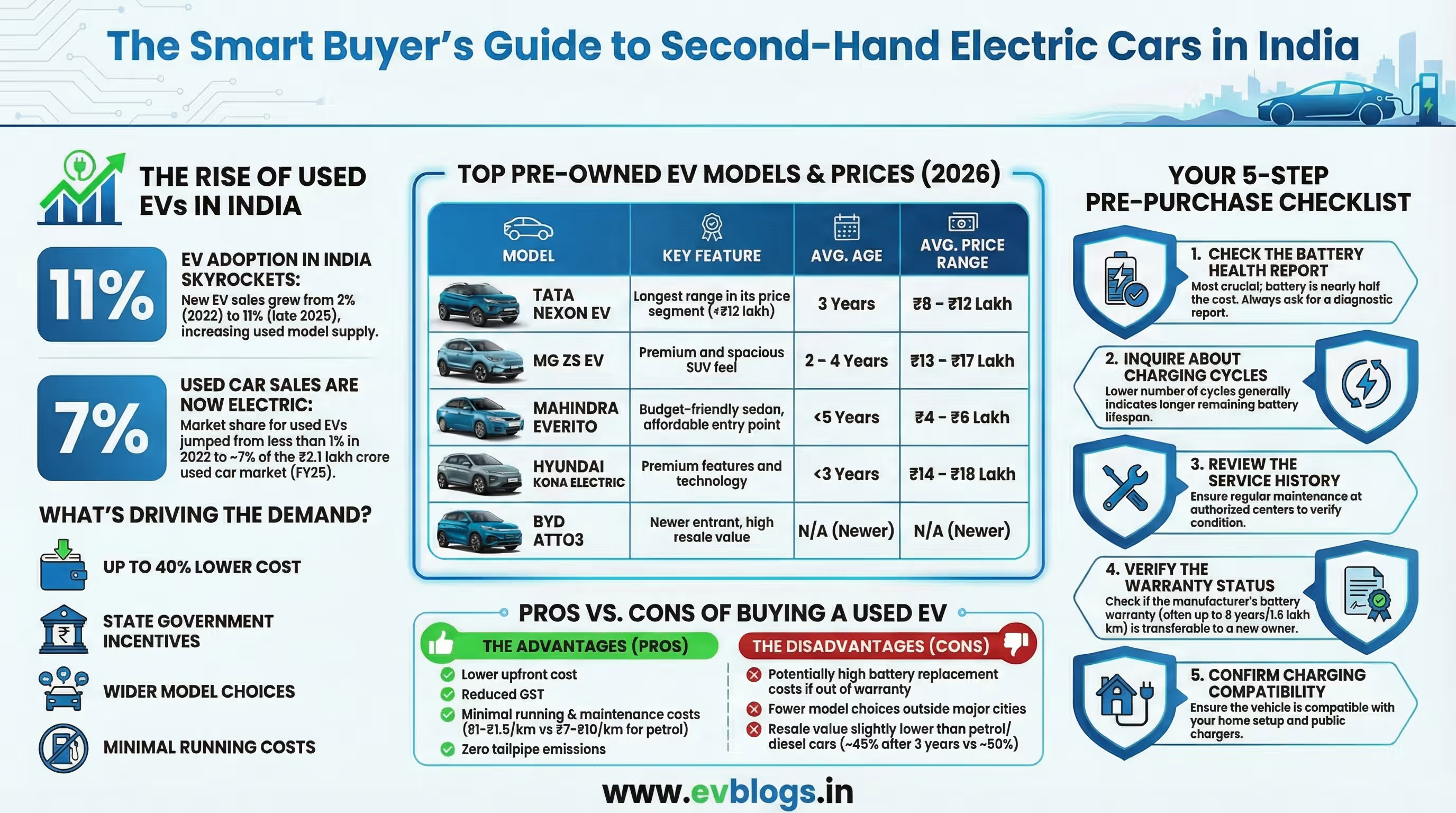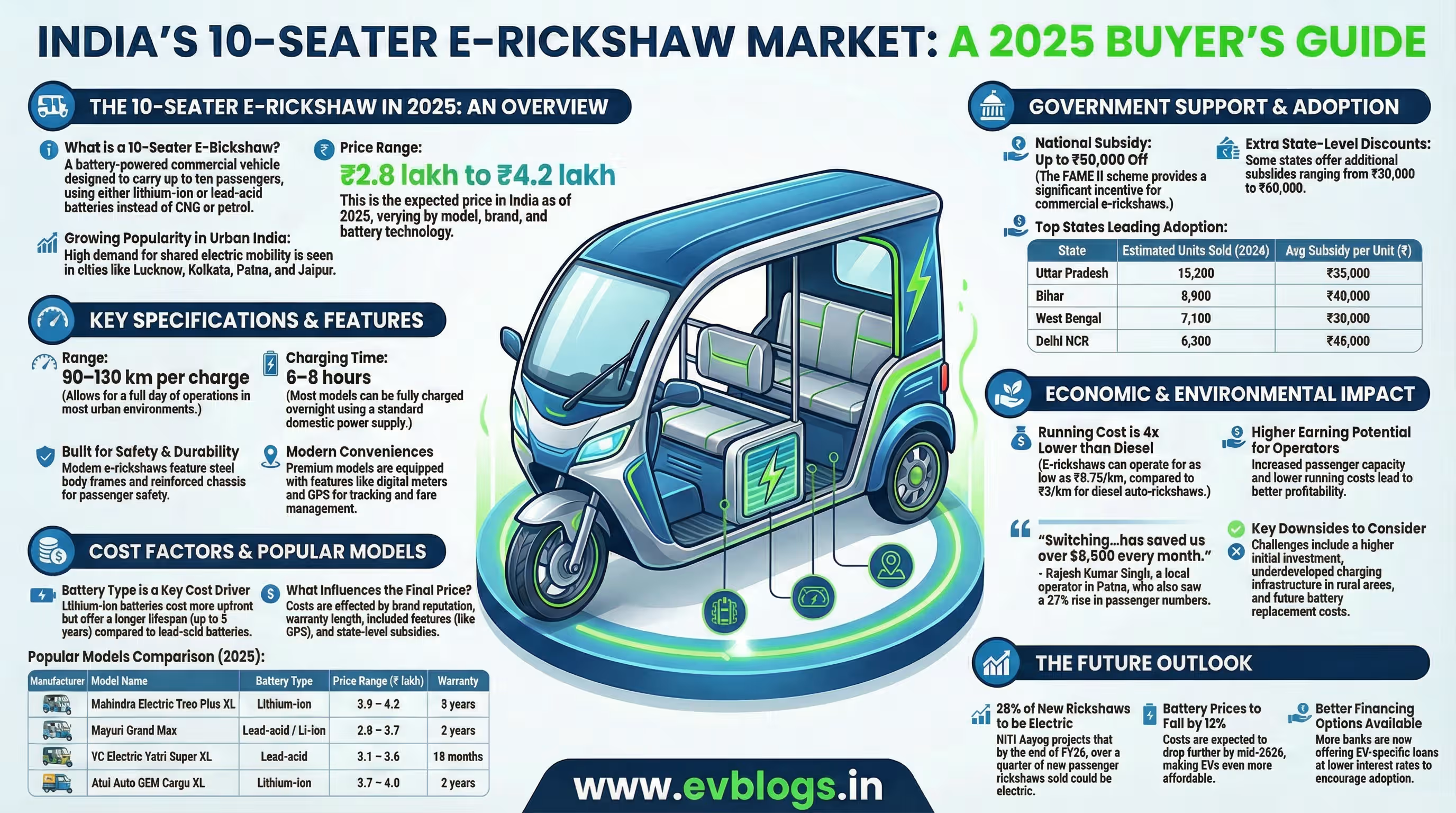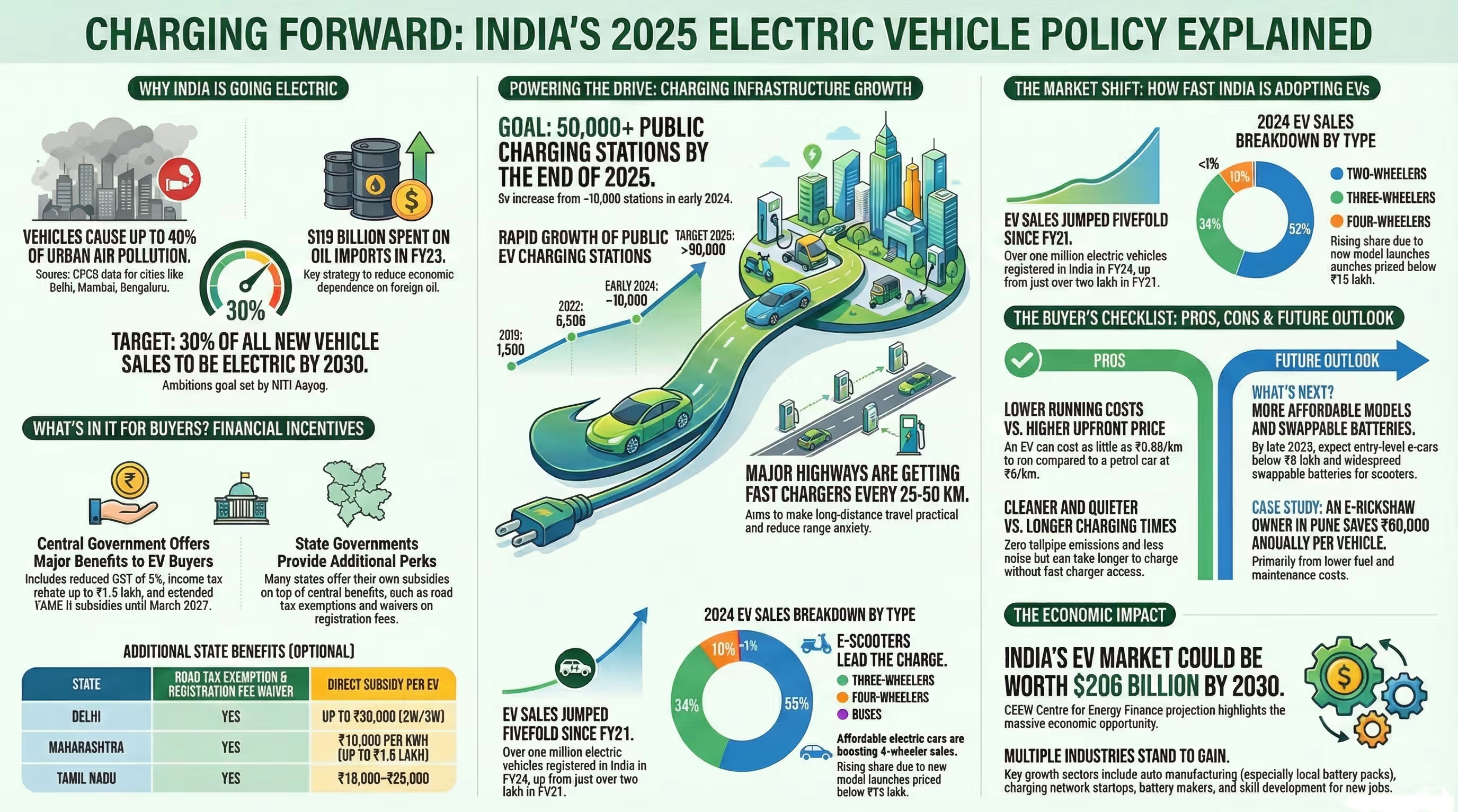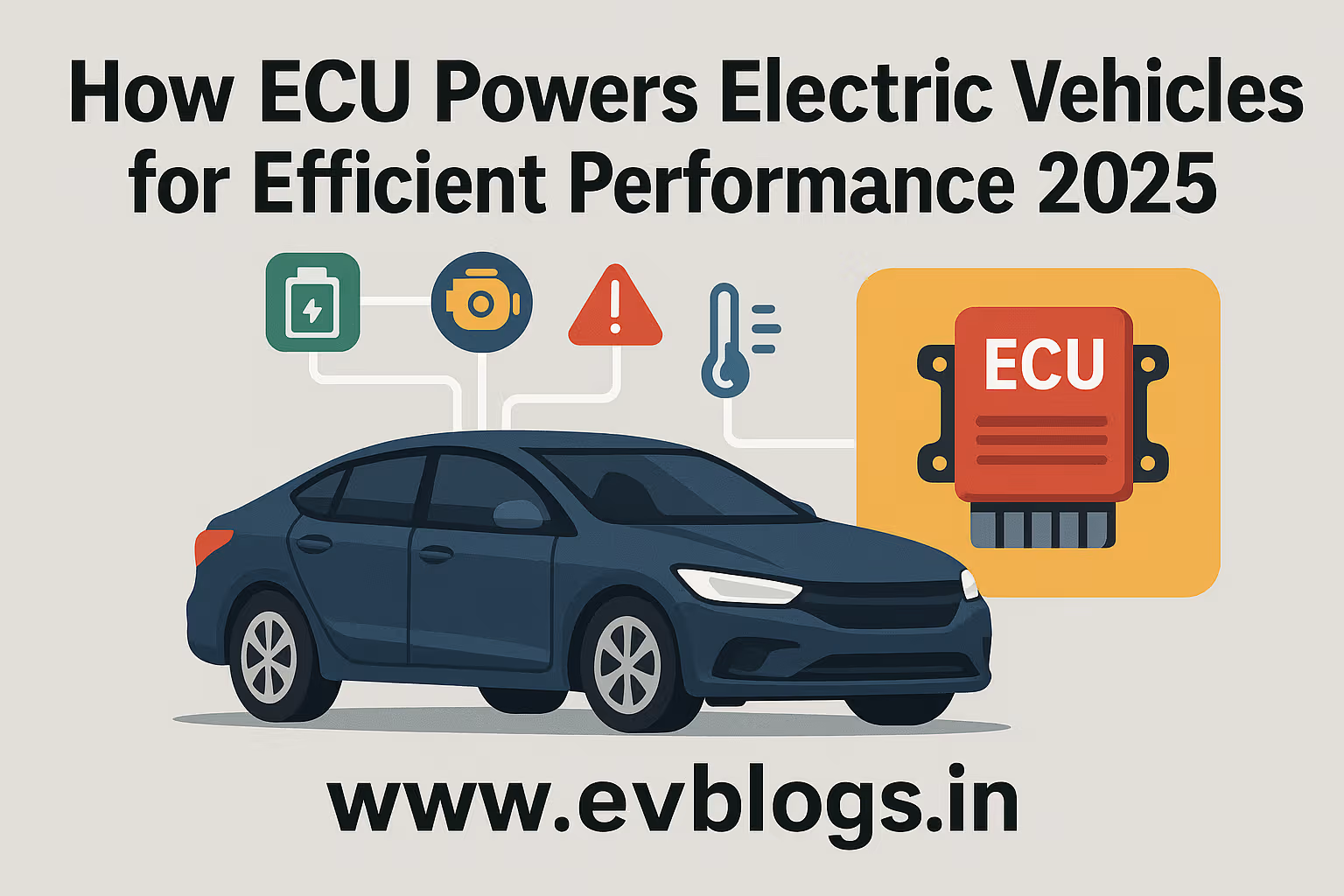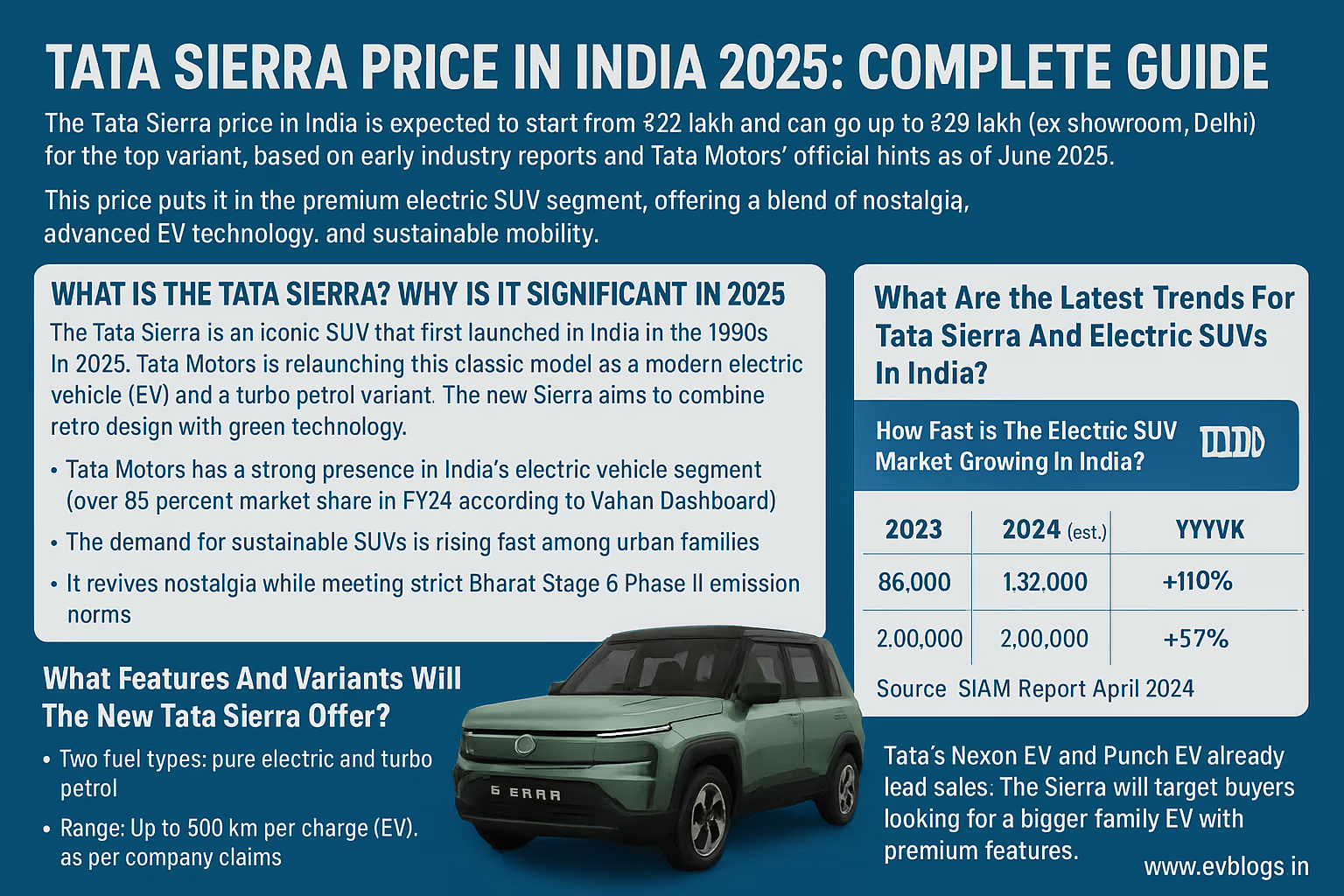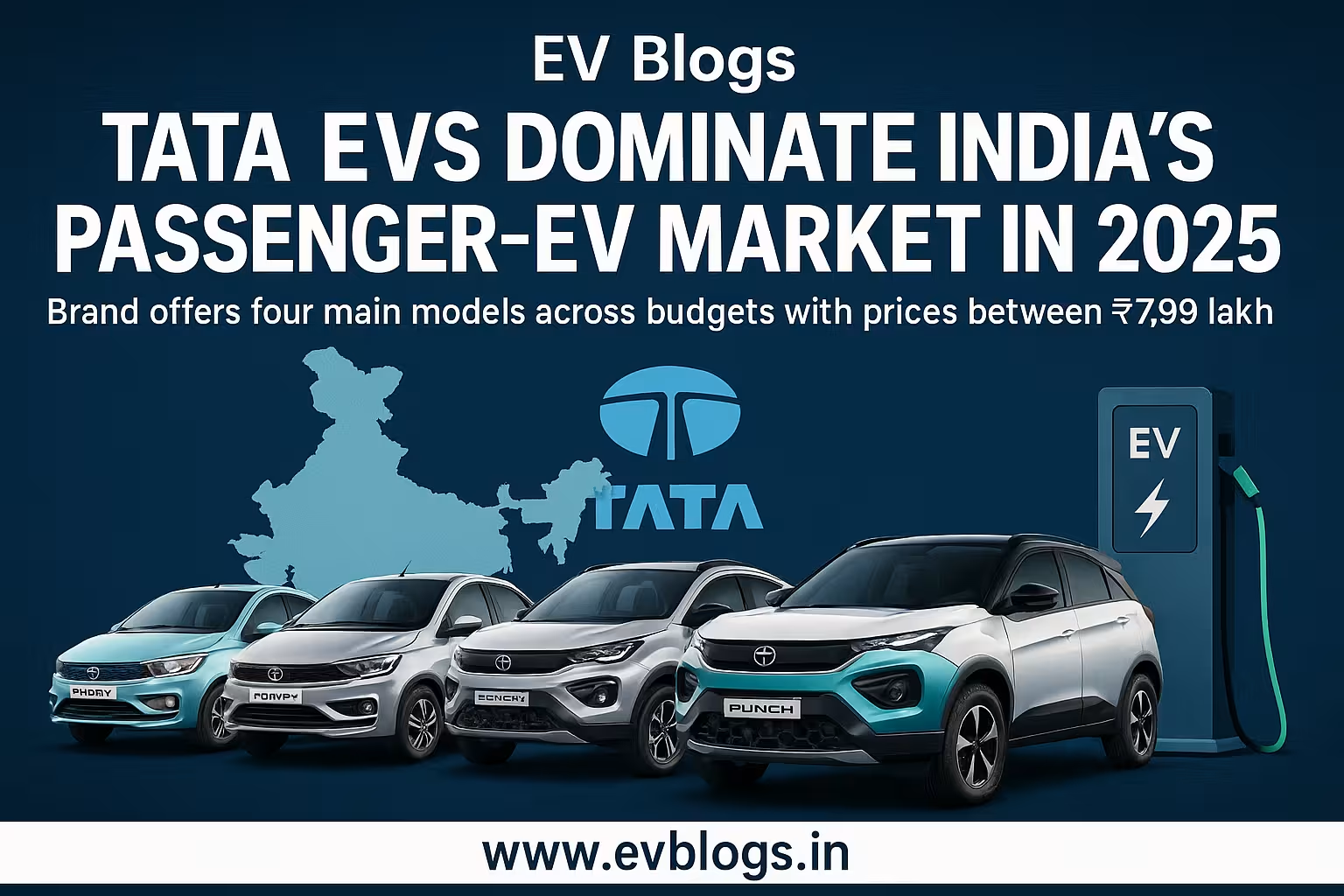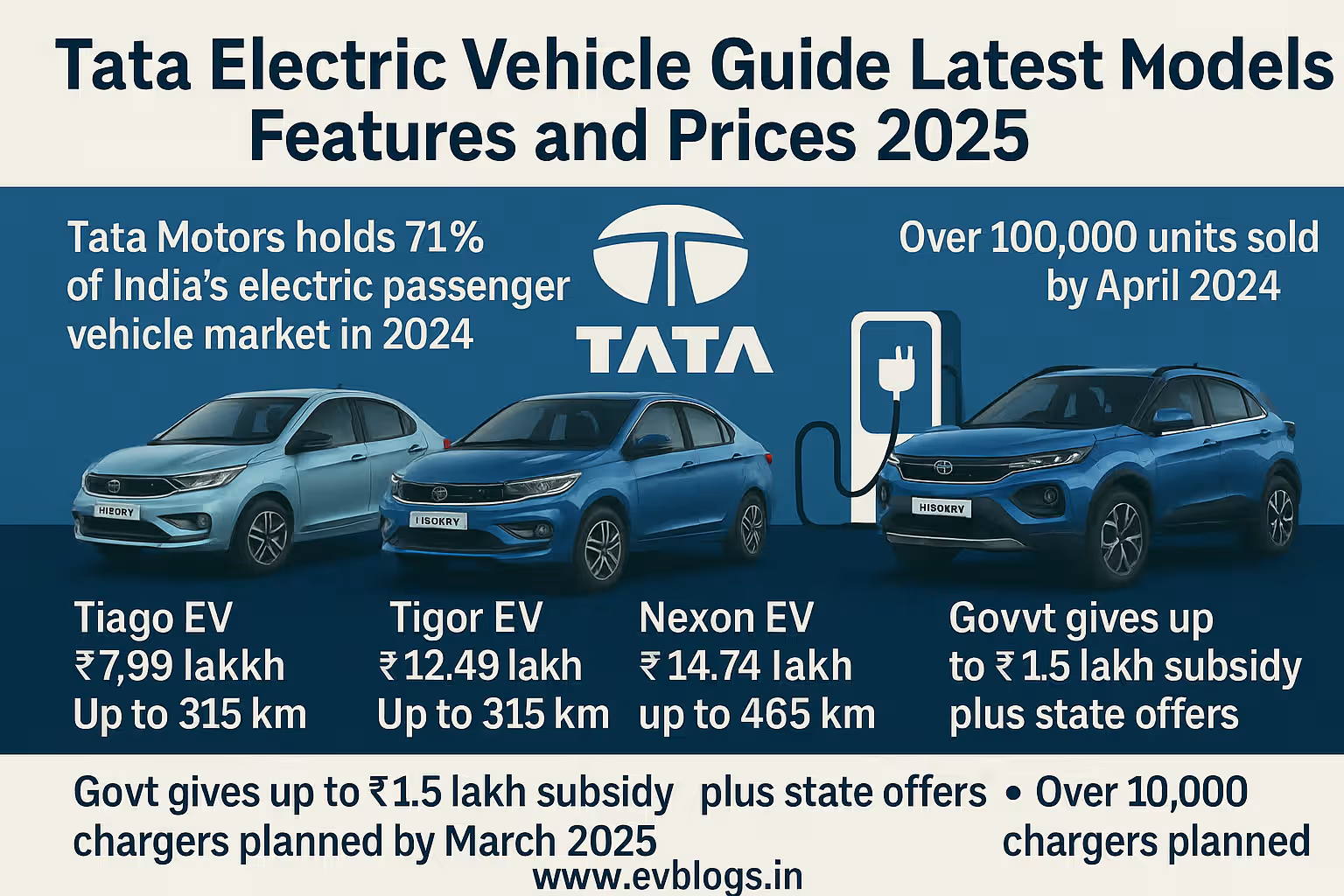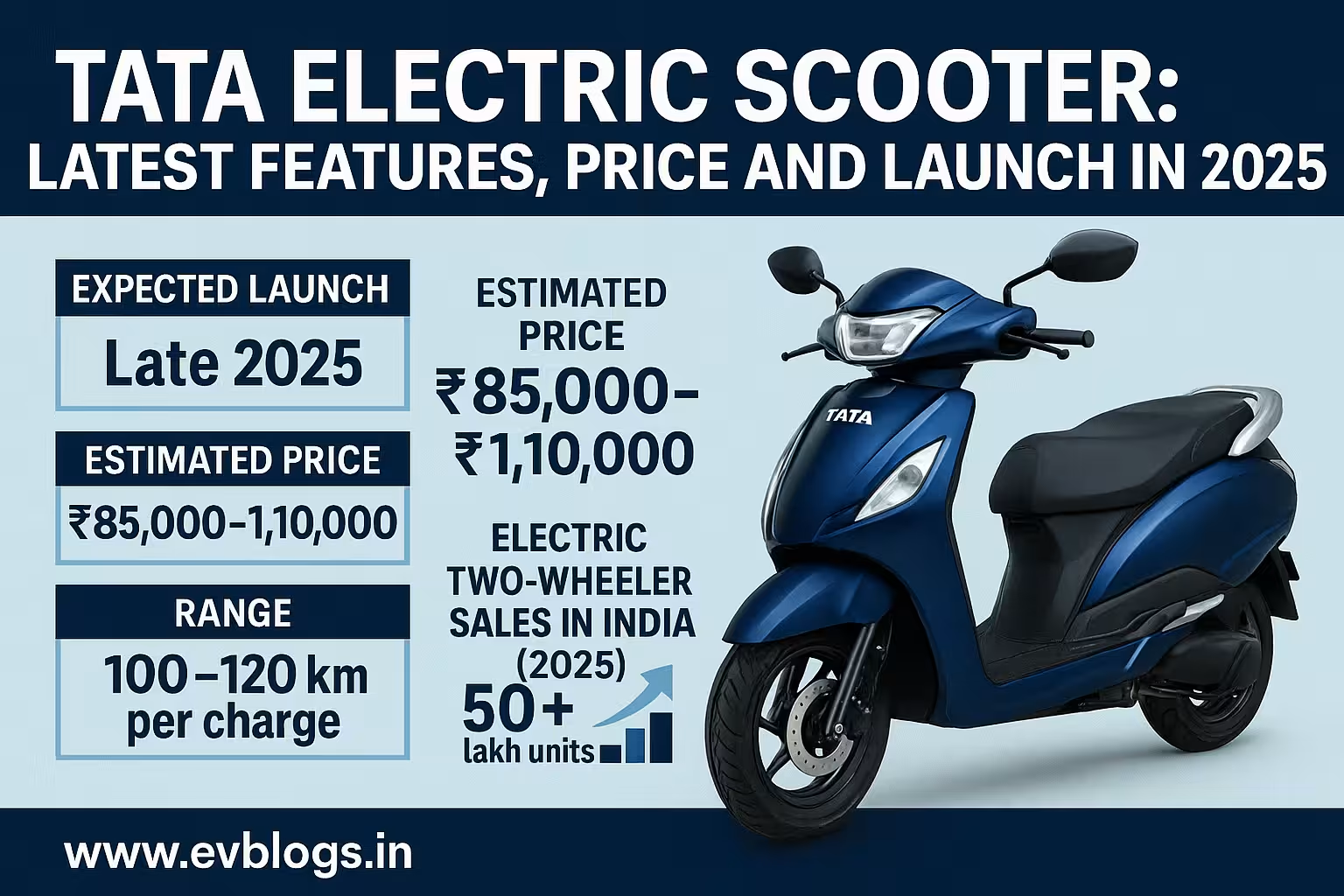Hedhvick Hirav
Hedhvick Hirav is a dedicated EV researcher and editor with over 4 years of experience in India’s growing electric vehicle ecosystem. Their contributions have been recognized in leading sustainability publications and automotive journals.
Summarize & analyze this article with
Choose an AI assistant and open this article directly:
Tip: if the AI doesn’t fetch the page automatically, paste the article URL manually.
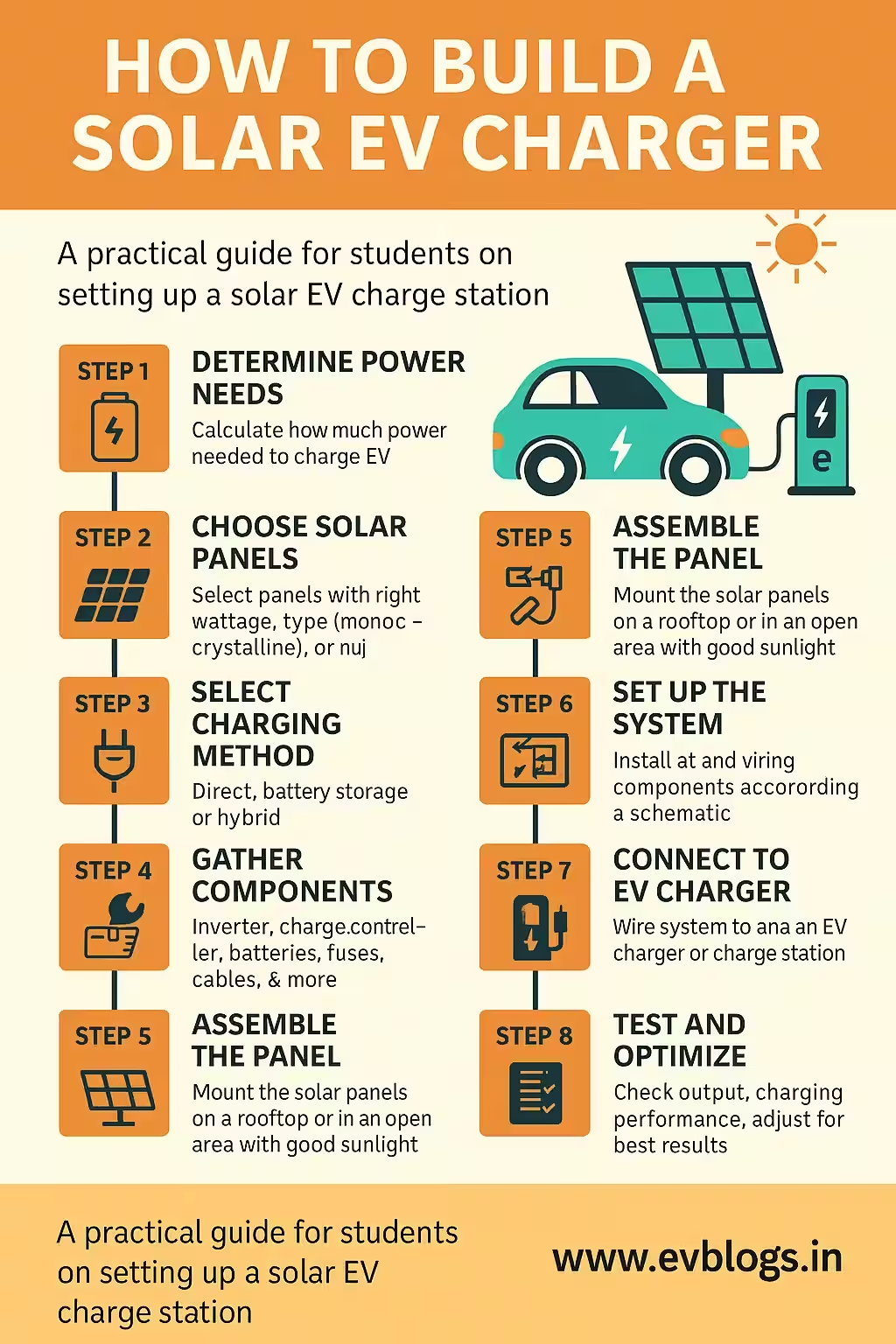
What is a Solar EV Charging Station and Why is it Important for India in 2025?
As you explore the world of electric vehicles (EVs) in India, you might be wondering: what is a solar EV charging station? Simply put, it’s a facility that uses solar power to charge electric vehicles, instead of relying solely on grid electricity. This is important for India, where the EV market is expanding rapidly, power grids face regular stress, and clean energy adoption is a top national agenda.
Why Build Solar EV Charging Stations in India?
- Rising EV Adoption: According to the Ministry of Road Transport and Highways, over 21 lakh EVs are registered in India as of early 2025, with numbers growing each month.
- Grid Independence: Solar charging stations reduce dependency on traditional electricity grids, ensuring charging even during power cuts—a common issue in many Indian cities.
- Environmental Impact: Solar energy is clean. Using solar power reduces carbon emissions and supports India’s 2070 net-zero goals.
- Cost Savings: After the initial investment, solar energy is free. This means your EV charging station can offer lower rates, attracting more users.
- Government Push: Subsidies and incentives from FAME II and new 2025 Solar Policy make setting up solar EV charging stations more affordable right now.
Who Benefits from Solar EV Charging Stations?
- EV Owners: Lower charging costs and reliable access, even during grid failures.
- Business Owners: Opportunity to earn revenue, increase footfall, and promote sustainability.
- Communities and Cities: Cleaner air, less grid load, and support for national renewable goals.
Did You Know?
According to CEEW, by 2025, nearly 10,000 new solar-powered charging stations are projected to be set up across major Indian cities like Delhi, Bengaluru, Pune, and Hyderabad.
How Does a Solar EV Charging Station Work in the Indian Context?
When you set up a solar EV charging station, you’re essentially capturing energy from the sun to charge electric vehicles. Here’s a simple breakdown:
Main Components
- Solar Panels: Capture sunlight and convert it into electricity.
- Inverters: Change the direct current (DC) from panels to alternating current (AC) used by EV chargers.
- Batteries (Optional): Store excess solar power for use at night or during cloudy days.
- EV Chargers: Connect to vehicles and manage the charging process.
- Control Systems: Monitor energy production, usage, and station status.
Charging Process
- Solar panels generate electricity during the day.
- The energy is either used directly or stored in batteries.
- EVs plug into the chargers, drawing solar-generated electricity.
- If solar supply is insufficient, the system can draw power from the grid as backup.
Typical Power Flow
- On sunny days: Solar → Inverter → EV Charger → Vehicle
- At night or cloudy days: Battery/Utility Grid → EV Charger → Vehicle
Example: Step-by-Step Charging
- Sunlight hits solar panels installed on your station’s rooftop.
- Panels generate DC electricity.
- Inverter converts DC to AC.
- AC powers the EV chargers.
- You connect your vehicle, and charging begins.
- Hybrid systems can also export extra power back to the grid, potentially earning you money.
Expert Insight
Most Indian solar EV charging stations use a hybrid setup: solar for daytime charging and grid/battery for night or monsoon seasons.
When is the Right Time to Build a Solar EV Charging Station in India?
You might be asking: with all the buzz, is 2025 the right time to invest? For India, the timing could not be better.
Market Growth in 2025
- EV sales in India expected to hit 30 lakh units in 2025 (SIAM data).
- FAME II subsidies extended until 2026, lowering setup costs.
- States like Maharashtra, Delhi, Tamil Nadu, and Gujarat offer additional incentives for renewable energy and EV infrastructure.
Key Timing Factors
- Rising EV Adoption: As more Indians switch to EVs, demand for charging infrastructure outpaces supply.
- Falling Solar Costs: Solar panel prices have dropped by over 40% since 2020.
- Favourable Policies: Current government support makes 2025 one of the most cost-effective times to build.
Business Opportunity
- Early movers in popular areas (malls, tech parks, highways) can establish loyal customer bases.
- Urban and semi-urban locations see the highest return on investment due to higher vehicle density.
Did You Know?
In 2025, new rules from the Central Electricity Authority allow simplified permissions for setting up private charging stations, expediting the launch process for solar EV stations.
Which Components Do You Need to Build a Solar EV Charging Station in India?
Setting up your own station requires a clear understanding of the key hardware and supporting systems.
Essential Components Checklist
- Solar Panels: Choose high-efficiency panels (mono PERC or bifacial). Typical station size: 10-30 kW for commercial, 3-5 kW for small scale.
- Mounting Structure: Galvanised steel or aluminium, designed for Indian weather.
- Inverter: Solar inverter with at least 95% efficiency.
- Battery Storage (Optional): Lithium-ion or LFP batteries for night-time or backup use.
- EV Chargers:
- Type 2 AC (most common for cars)
- DC Fast Chargers (Bharat DC-001, CCS2, CHAdeMO for faster charging)
- Electric Panels & Wiring: ISI-certified, weatherproof, and surge-protected.
- Smart Metering & Control System: For billing, monitoring, and remote management.
- Internet Connectivity: For real-time updates, payments, and user notifications.
- Safety Systems: Circuit breakers, earthing, and fire extinguishers.
Additional Considerations
- Parking and Signage: Clearly marked EV spots, easy access.
- Security: CCTV, lighting, and fencing as needed.
- Payment Integration: UPI, credit/debit cards, and app-based solutions.
Expert Insight
In India, the Bharat EV Charger standards (Bharat AC-001 and DC-001) are widely accepted for compatibility across most Indian EVs as of 2025.
How Much Does it Cost to Set Up a Solar EV Charging Station in India in 2025?
Understanding the cost breakdown helps you make an informed decision. Actual investment varies based on size, location, and type of charging setup.
| Station Type | Capacity (kW) | Solar Panel Cost (₹/W) | EV Charger Cost (₹) | Battery Cost (₹/kWh) | Total Estimated Cost (₹) | Govt. Subsidy (₹) | Net Cost (₹) |
|---|---|---|---|---|---|---|---|
| Home/Private | 3-5 | 35-40 | 50,000-1,50,000 | 18,000-20,000 | 3,50,000 - 5,00,000 | Up to 1,00,000 | 2,50,000 - 4,00,000 |
| Small Commercial | 10-15 | 32-38 | 2L - 5L | 16,000-18,000 | 8,00,000 - 15,00,000 | Up to 3,00,000 | 5,00,000 - 12,00,000 |
| Highway/Multi-bay | 30+ | 28-35 | 5L - 12L | 15,000-17,000 | 20,00,000 - 40,00,000 | Up to 7,00,000 | 13,00,000 - 33,00,000 |
Explanation of Costs
- Solar Panel Cost: Per watt cost in 2025, including mounting.
- EV Charger Cost: Depends on charger type, brand, and speed.
- Battery Cost: Optional but recommended for backup.
- Other Costs: Installation, permits, civil work, and security.
- Subsidy: Central and state government incentives can reduce upfront cost by 15-30%.
Recurring Expenses
- Maintenance: Cleaning panels, servicing chargers.
- Electricity (if grid used): Only when solar is insufficient.
- Staffing/Security: If required for commercial sites.
Did You Know?
Solar-powered stations can recover their total investment within 3-5 years in metro cities through charging fees and potential power sale to local grids.
Where Should You Set Up a Solar EV Charging Station in India for Best Results?
Choosing the right location maximizes your revenue and impact.
Ideal Locations
- Urban Residential Complexes: Growing number of EV owners.
- IT/Business Parks: High employee footfall, many potential users.
- Shopping Malls and Multiplexes: Long parking durations, extra services.
- Highways/Expressways: For intercity travelers and logistics fleets.
- Hospitals/Educational Institutions: Safety and green initiatives.
- Public Parking Lots and Metro Stations: High visibility and frequent users.
Location Selection Checklist
- High EV density or projected growth area
- Good sunlight exposure (roof or ground-mounted panels)
- Secure, easily accessible parking spots
- Proximity to local utilities for grid backup
- Local government support or ease of obtaining permits
Expert Insight
In 2025, cities like Delhi, Mumbai, Pune, and Bengaluru provide fast-track approvals and extra incentives for solar EV stations, especially near metro stations and bus depots.
Which Are the Top Solar EV Charging Station Brands and Suppliers in India (2025)?
It’s smart to compare leading suppliers for quality, reliability, and service. Here’s a comparison to help you choose:
| Brand/Supplier | Charger Types | Solar Integration | Warranty | Installation Support | Price Range (₹) | Notable Projects (2025) |
|---|---|---|---|---|---|---|
| Tata Power EZ Charge | AC, DC | Yes | Up to 5 years | Yes | Medium-High | Delhi, Mumbai, Pune public stations |
| Fortum India | DC Fast | Yes | 3 years | Yes | High | NCR, Bangalore, Chennai |
| Delta Electronics | AC, DC | Yes | 2 years | Yes | High | Highway charging corridors |
| ABB India | DC Fast | Yes | 3 years | Yes | High | Pune Smart City, Hyderabad |
| Magenta ChargeGrid | AC, DC | Yes | 3 years | Yes | Medium | Mumbai, Bengaluru |
| Zeon Charging | AC, DC | Yes | 1-2 years | Yes | Medium | South India cities |
| Exicom Tele-Systems | AC, DC | Yes | 2 years | Yes | Medium | Delhi NCR, commercial complexes |
| Charge+Zone | AC, DC | Yes | 2 years | Yes | Medium | Gujarat, Mumbai Highways |
| EVRE | AC, DC | Yes | 2 years | Yes | Medium | Bangalore, Pune |
| Okaya Power | AC, DC | Yes | 2 years | Yes | Medium | North India retail, public parks |
Details on Major Suppliers
- Tata Power EZ Charge
- Most established network; excellent after-sales.
- Special packages for commercial and residential clients.
- Fortum India
- Focus on fast DC charging and solar hybrid solutions.
- Known for reliable uptime in harsh weather.
- Delta Electronics
- Advanced technology, rapid charging, robust service.
- Preferred supplier for highway charging corridors.
- ABB India
- Global leader, great for large public/commercial setups.
- Comprehensive warranty and safety features.
- Magenta ChargeGrid
- Focuses on modular, scalable solar charging solutions.
- Partnered with malls and tech parks in Maharashtra.
- Zeon Charging, Exicom, Charge+Zone, EVRE, Okaya
- Regional strengths, quick installation, reasonable pricing.
- Readily available parts and support.
Did You Know?
In 2025, Tata Power EZ Charge operates India’s largest solar-integrated public charging network, with over 4,000 active stations nationwide.
How to Get Government Approvals and Subsidies for a Solar EV Charging Station in India?
Navigating the approvals process is easier than you might think, especially with new 2025 policies.
Step-by-Step Approval Process
- Municipal Permissions: Approach your city/town municipality for land use and construction approval.
- DISCOM Approval: Coordinate with your local electricity distribution company for grid connectivity and net metering (if exporting surplus power).
- Central Licenses: As per MoP 2023/2025 guidelines, simple registration—no special license needed for private commercial charging stations.
- Fire and Safety Compliance: Get clearance for electrical and fire safety from the local authority.
- Electrical Inspectorate: Final inspection after installation.
Subsidies and Incentives (2025)
- FAME II (Faster Adoption and Manufacturing of Electric Vehicles): Up to 20% capital subsidy for station setup.
- MNRE Solar Subsidy: Up to 40% for rooftop solar installations.
- State Incentives: Vary by state; Maharashtra, Delhi, Karnataka, and Tamil Nadu offer extra support (₹1-7 lakhs per site).
- GST Benefits: Lower GST (5%) on EV chargers and solar components.
Tips to Maximize Benefits
- Combine central and state incentives.
- Use local ‘Make-in-India’ components for higher subsidies.
- Register your station on government EV charging portals for visibility.
Expert Insight
According to the Ministry of Power (2025), applying online for EV station registration reduces approval time by 60% compared to manual processes.
How Do You Choose the Right Solar Panel and Charger Combinations for Your Needs?
The best system for you depends on your location, expected usage, and budget.
Selecting Solar Panels
- Type: Mono-PERC or bifacial panels offer highest efficiency (20-22% in Indian conditions).
- Capacity:
- Home setup: 3-5 kW
- Commercial: 10-30 kW or more
- Brand: Consider Tata Power, Vikram Solar, Waaree, Adani Solar for India-specific support.
- Warranty: Look for at least 25-year performance warranty.
Choosing EV Chargers
- AC Chargers: Slower, suitable for homes and workplaces (3.3-22 kW output).
- DC Fast Chargers: For commercial/highway, much faster (30-120 kW output).
- Compatibility: Ensure compliance with Bharat AC-001, DC-001, or global standards like CCS2.
Recommended Setups
- Residential: 3 kW solar + 7.4 kW AC charger (Type 2)
- Commercial: 15 kW solar + 2x 30 kW DC chargers + 2x 7.4 kW AC chargers
- Highway: 30+ kW solar + 2x 60 kW DC chargers + battery storage
Sizing Your System
- Match expected daily charging demand with solar generation.
- Account for monsoon/cloudy days—consider hybrid grid-battery backup.
Brands to Consider
- Solar: Tata Power Solar, Vikram Solar, Adani Solar, Waaree
- Chargers: Tata, ABB, Delta, Okaya, Exicom
Did You Know?
Bifacial solar panels can boost energy output by up to 15% in Indian climates, ideal for open parking lot installations.
How to Design and Install a Solar EV Charging Station: Step-by-Step Guide for India
If you’re ready to build, here’s how the process typically unfolds.
Step-by-Step Process
- Site Survey
- Assess sunlight availability, parking, and electrical access.
- Load Calculation
- Estimate daily energy needs based on expected users.
- System Design
- Layout for solar panels, inverter sizing, charger placement, and cabling.
- Permitting
- Apply for municipal, DISCOM, and fire safety approvals.
- Procurement
- Choose suppliers for panels, chargers, and other equipment.
- Installation
- Set up mounting structures, install panels, inverters, and chargers.
- Connect wiring, set up control systems, and payment integration.
- Testing and Commissioning
- Verify system output, safety checks, and load testing.
- Registration
- List your station on government and private EV charging networks for visibility.
Installation Best Practices
- Install panels with a tilt angle suitable for your city’s latitude for maximum output.
- Use weatherproof, ISI-marked cabling and protective gear.
- Plan for future scalability (add chargers/panels as demand grows).
First-Hand Experience: Case Study
Priya, a Bengaluru Tech Park Manager:
“In 2024, we installed a 20 kW solar-powered charging station with 2 DC and 2 AC chargers. By mid-2025, we served over 500 unique users monthly. Grid bills dropped by 60%, and our chargers run uninterrupted even during summer power cuts. The project broke even in just under 3 years, thanks to state subsidies.”
Expert Insight
Always use certified installers and request a test report before going live—this not only ensures safety but also helps in seamless government subsidy disbursement.
What are the Challenges and Solutions When Building a Solar EV Charging Station in India?
While the potential is great, you should be aware of practical challenges.
Common Challenges
- Land and Space: Limited urban space for solar panels and parking.
- Initial Investment: High upfront cost, but manageable with subsidies.
- Grid Connectivity: Approval delays in some states.
- Weather Variability: Reduced solar generation during monsoon or cloudy days.
- Technical Support: Need for quick maintenance to avoid downtime.
- User Awareness: Many users are still new to EVs and solar charging options.
Practical Solutions
- Use elevated solar canopies over parking lots to maximize space.
- Start small (pilot projects) and expand as demand rises.
- Opt for hybrid systems (solar + battery + grid) for reliability.
- Build partnerships with malls, IT parks, or local governments for faster approvals and user education.
- Choose brands with strong after-sales service networks.
Case Study: Overcoming Monsoon Downtime
Ahmedabad Highway Station Owner:
“In 2023, cloudy weather cut our daily solar output by 40%. Adding a battery bank and grid backup ensured uninterrupted charging. By 2025, consistent uptime brought in more users and higher revenue, even during the rainy season.”
Did You Know?
Over 70% of India’s solar EV charging downtime in early installations (2021-2023) was due to insufficient battery backup or poor maintenance.
How Profitable is a Solar EV Charging Station in India in 2025?
You may be considering if the investment is truly worth it. Profitability depends on several factors:
Revenue Streams
- Charging Fees: ₹12-₹18 per kWh (varies by city and location).
- Ancillary Services: Parking fees, convenience stores, advertising at station.
- Grid Export: Sell surplus solar power to DISCOMs during low-usage hours.
Example Profit Calculation (Commercial Station)
- Station Size: 15 kW solar, 2 DC, 2 AC chargers
- Daily Users: 20 cars, each charging 15 kWh (average)
- Monthly Revenue: 20 cars x 15 kWh x 30 days x ₹15/kWh = ₹1,35,000
- Monthly Expenses (O&M, staff, grid backup): Approx. ₹30,000
- Net Monthly Profit: ₹1,05,000
- Payback Period: 2.5-4 years with government incentives
Factors Affecting Profitability
- Location (urban > rural)
- Local EV adoption rates
- Quality and uptime of your station
- Efficient use of solar + battery = lower OPEX
- Effective marketing (apps, Google Maps, EV networks)
Expert Insight
In high-traffic areas, solar EV charging stations see occupancy rates above 50%, leading to ROI within 2-3 years as of 2025.
Why Should You Build a Solar EV Charging Station in India in 2025? (Final Verdict)
Here’s the bottom line:
- Building a solar EV charging station in India in 2025 is not just environmentally responsible—it’s also financially smart.
- With the government pushing for clean mobility and renewable energy, your upfront costs are significantly reduced.
- You become part of a rapidly growing industry, help reduce urban pollution, and offer an essential service as more Indians shift to electric vehicles.
- The market is still young—early entrants can secure the best locations and build brand loyalty.
Takeaway for Indian Users
- If you have access to space (even a rooftop or parking lot), government support, and basic investment capital, now is the best time to get involved.
- Choose reliable brands, get the right permits, and partner with local authorities or businesses for better reach.
- Plan for future expansion—India’s EV revolution is just starting, and your station can grow with it.
Did You Know?
The National Electric Mobility Mission Plan targets at least 30% of all vehicle sales to be electric by 2030, meaning the demand for solar-powered stations will soar in the coming years.
FAQs
1. Can I set up a solar EV charging station at home in India?
Yes, with a rooftop solar system (3-5 kW) and a compatible AC charger, you can set up a home EV charging station. Check local DISCOM and municipal rules for residential setups.
2. How long does it take to get government approvals for a solar EV charging station?
With online processes in 2025, most approvals take 2-4 weeks, provided all documents and compliance steps are in order.
3. Is battery storage necessary for a solar EV station in India?
While not mandatory, battery storage is recommended for reliable night-time operation and during cloudy weather, especially in regions with frequent power cuts.
4. What is the warranty period for solar panels and EV chargers in India?
Solar panels typically come with a 25-year performance warranty, while EV chargers have warranties ranging from 1-5 years, depending on the brand.
5. Can I earn extra income by selling surplus solar power from my EV station to the grid?
Yes, with net metering in many Indian states, you can export excess solar energy and earn credits or payments from your local DISCOM. Check with your state policy for details.
Disclaimer: Costs, policies, and incentives are subject to change based on government revisions and market conditions. Always consult local authorities and certified installers before making investment decisions.


